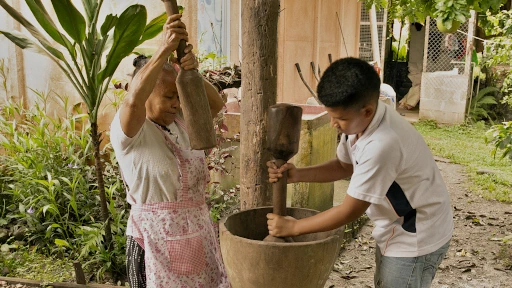Opinion Editorial Archive May, 2023: Stem - Ik ≠ Mars x Est Q.E.D.

The final scene of the 1982 film, Koyaanisqatsi, underscores its subtitle, Life out of Balance. That scene, of a space rocket exploding during launch, was repeated eleven days ago. The new explosion (which was deliberate) did not inform us that life on Earth is still out of balance. When someone is shot just for retrieving a basketball from their neighbor's garden, we already know that something is very wrong.
Science, Technology, Engineering and Mathematics (STEM) is the term we now use for the main theme of Koyaanisqatsi — that life is out of balance largely because of the negative impact that technology can have. It should not be lost on us that the director drew on an indigenous language (Hopi) to title the film. In doing so, Godfrey Reggio implied that Indigenous Knowledge (IK) can offer a way to counter the impact of technology. Forty-one years later, his thesis is still not widely accepted, and his film remains visionary.
We saw Reggio's vision during the past two weeks at the meeting of the United Nations Permanent Forum on Indigenous Issues. There, indigenous leaders repeatedly warned us that global policymaking to reduce the impact of current technologies is excluding them.
So, STEM, plus IK, should equal something. My opinion is that we should consider, instead, what STEM minus IK does not equal.
This month's photo shows an indigenous Bribri woman from Costa Rica with her grandson. They are pounding cocoa beans. They don't have enough formal STEM education to know that they are taking advantage of Newton's laws of motion. But they do know how to make a drink that tastes divine.
There are millions of examples of IK that is stil used every day which have a STEM-based explanation. In contrast, while space rocket designers must fully understand principles like Newton's laws of motion, they rarely draw on IK.
Still, the maiden test flight of the SpaceX Starship system eleven days ago demonstrated that there is a long way to go before it realizes its ambition of getting us to Mars. The next test launch is stated to be one to two months from now. That estimate is measured in Elon Standard Time (EST), so it will be much later on indigenous calendars.
While the SpaceX test flight was the most significant event from last month in our eventual journey to Mars, it was not the only one. NASA updated the plan for its "Moon to Mars" strategy; the Ingenuity helicopter (a drone, really) flew for the fiftieth time above Martian soil; and NASA announced the four members of the team that will live on a simulated Mars (on Earth) for a year.
Of these three events, the latter is the most significant because the first two involve only STEM. Predictably, those chosen for NASA's Crew Health and Performance Exploration Analog all have a strong STEM background. Whether they have an IK background has not been disclosed. That is unfortunate because they will need an IK background — the most basic of all primate skills (getting along socially with others) requires IK.
They will be the subjects of a new social psychology experiment. The "Stanford Prison Experiment" is the best-known example of a social psychology experiment that had to be halted. If NASA's behavioral scientists did not choose subjects with an IK background, their experiment may also have to be halted. That would set back our journey to Mars by many years of EST.
NASA and SpaceX have some of the best engineers in history. Since engineers rarely draw on IK, there is no point in trying to alert them to the concerns of the Carrizo Comecrudo Tribe of Texas. Instead, those concerns are best expressed in a way that engineers understand: Stem - Ik ≠ Mars x Est. Quad Erat Demonstrandum.
If you enjoyed reading this month's opinion editorial, please consider supporting independent, advertising-free journalism by buying us a coffee to help us cover the cost of hosting our web site. Please click on the link or scan the QR code. Thanks!

